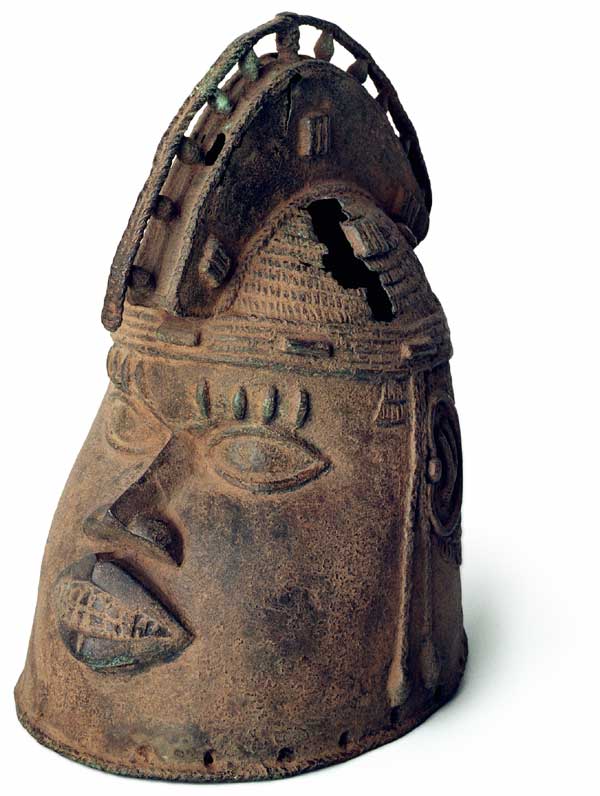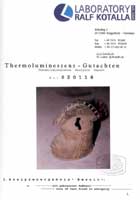Galerie Peter Herrmann |
- | Ancient Art from Africa |
||
 |
| Oduduwa Helmet Mask | Thermoluminescence-Report |
| Benin, Nigeria 16th/17th century Bronze 25 cm |
 |
This head functioned as a type of helmet or headdress for the Oduduwa Mask Festival and is for that reason often referred to as an Oduduwa Mask. |
At the festival, seven people dance back and forth in memory of the founders of the Oranmiyan Dynasty, celebrating the supremacy of the royal ancestors vis-à-vis the ordinary population. The name Oduduwa (or Odudua) means Creator God and refers to the foundational myth of the current dynasty, according to which Oduduwa, ruler of the Yoruba Kingdom of Ife, sent his son Oranmiyan to Benin to found a royal dynasty. The head shown here represents a woman; in contrast, the male counterpart features an upper section more closely resembling a rod or stick. The woman's physiognomy is more expressively rendered than in many other heads, and her open mouth with prominent protruding teeth constitutes a particularly unique exception amongst works from Benin. William Fagg sees a connection between this style and that of the Ijo from the Niger Delta. According to Egharevba, the chronicler of Benin, this type of mask was first introduced in the mid-18 th century. But given our dating of the object to circa 400 years, the question of when this type of mask was first introduced must be re-opened. Cp.: |
| Similar objects | Illustration |
British Museum, London |
William B. FAGG: Bildwerke aus Nigeria, München 1963, S. 47. |
Paula Girshick BEN-AMOS: The art of Benin, London 1980, S. 91/ 92. |
W./ B. FORMAN, Philip DARK: Die Kunst von Benin, Prag 1960, S. 77/ 78. |
Ethnologisches Museum, Staatliche Museen zu Berlin |
Barbara PLANKENSTEINER (Hg.): Benin. Könige und Rituale. Höfische Kunst aus Nigeria, Wien 2007, S. 474. |